This week we’re taking a delicious trip across the Middle East and North Africa via a mouth-watering array of dishes and drinks. Middle Eastern and North African cuisine is hugely varied, drawing on the wealth of herbs and spices available in the region and age-old traditions from hundreds of different cultures. From mint tea and qahwa to delicious stews, succulent barbecued carp, and even snails with lavender, there are so many incredible flavours to discover and this list of food and drinks to try is just the beginning. Let us know in the comments how many you’ve tried!
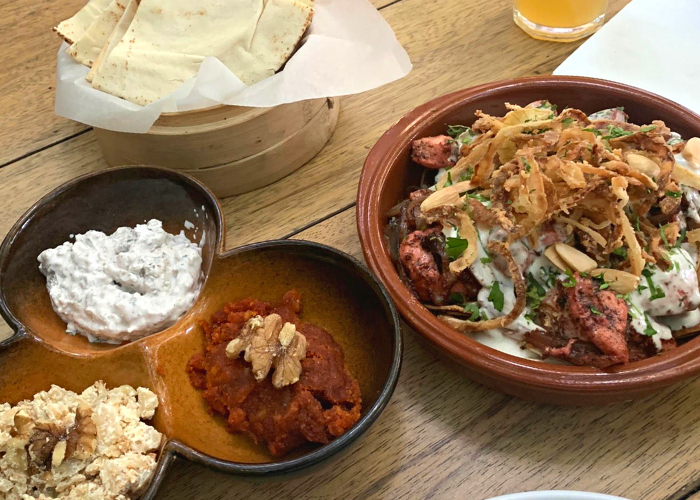
Fattet Musakhan
This delicious jewel-toned dish is full of different flavours and textures. Ruby coloured morsels of chicken flavoured with sumac are piled with sautéed onions and chickpeas on top of fried pieces of flatbread and then drizzled with a sauce made from tahini, lemon juice and yoghurt. Finally, the dish is topped with crispy fried onion and sprinkled with pine nuts, parsley, and sometimes pomegranate seeds.
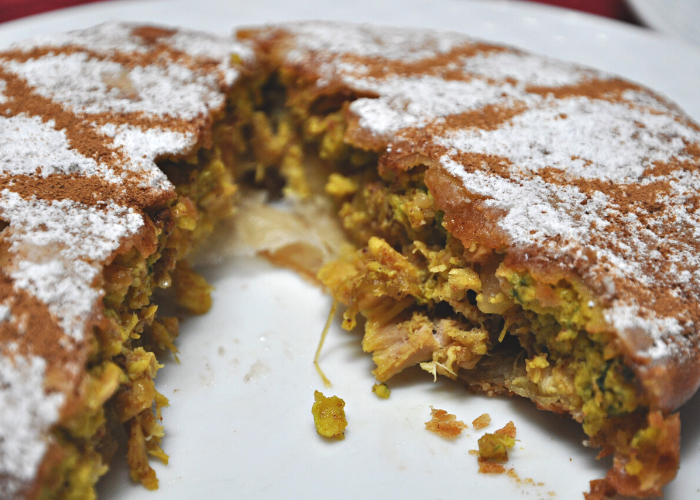
Bastilla
This beautiful dish dusted with icing sugar and cinnamon is a bastilla, or pastilla – a fabulous pie from Morocco and Algeria that is actually savoury! Bastillas can be made with meat or seafood, but our favourite version is made with almonds and pigeon – or alternatively chicken – cooked in spices. This mixture is then wrapped in paper-thin pastry called warqa and dusted with a criss-cross pattern of icing sugar and cinnamon to create a dish that is the perfect combination of savoury and sweet.
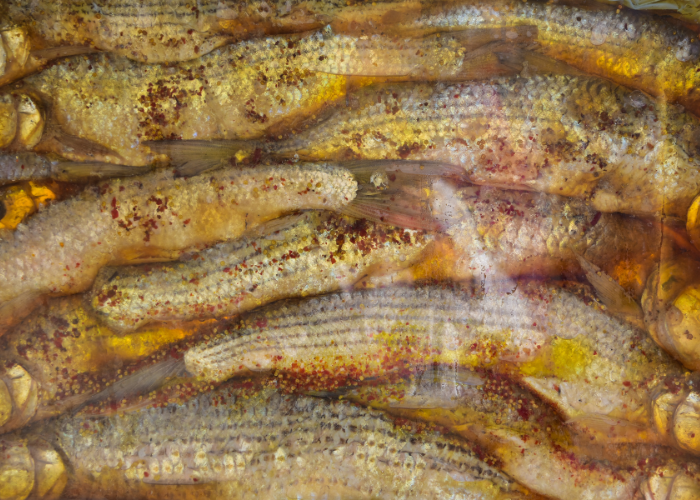
Fesikh
Fesikh is a kind of fermented, salted fish, traditionally served during the Egyptian springtime festival of Sham En Nessim. Families and friends usually celebrate the festival by going for picnics in beautiful outdoor spaces – the perfect place to eat fesikh as the smell is so pungent!
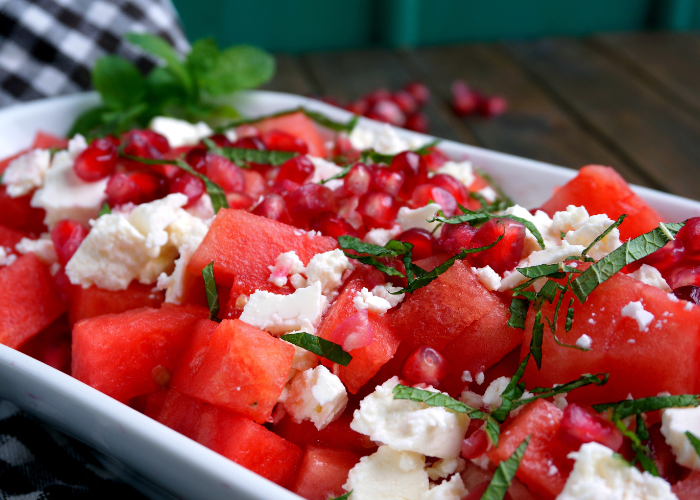
Watermelon and Feta Salad
One of the surest signs of summer in the Middle East are the trucks which appear each year laden with enormous watermelons, or batikh, announcing their presence through megaphones. One of our favourite ways to eat batikh is in this incredible watermelon and feta salad, but for some it does seem to raise as much controversy as pineapple on pizza! Have you tried cheese with your watermelon before?
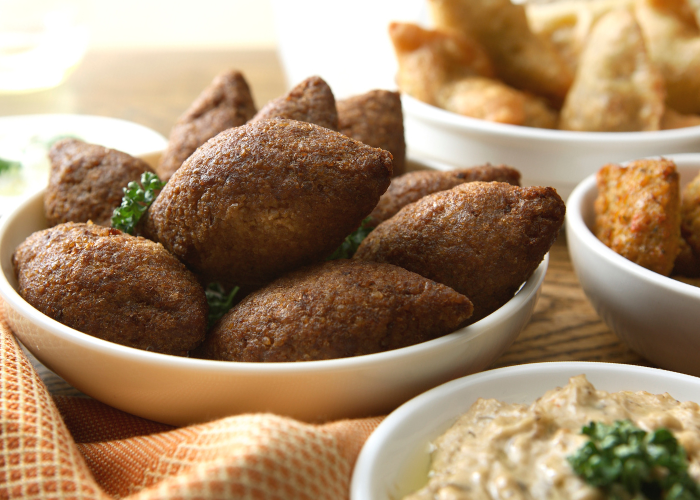
Kibbeh
A timeless classic, kibbeh is beloved all across the Middle East, and with very good reason. Although pronunciations, shapes and recipes vary, the essence of kibbeh is spiced minced meat with onions, pine nuts and a grain like bulgar wheat. As well as the iconic torpedo shaped fried meatballs, kibbeh can also be prepared in layers and baked, formed into disks, simmered in a tomato or yoghurt sauce, or even made into a stew. There is also a raw version of kibbeh, called kibbeh nayyeh, which is especially popular in Lebanon and Syria. Kibbeh is so delicious that it’s even spread as far as Brazil, where it’s known as quibe!
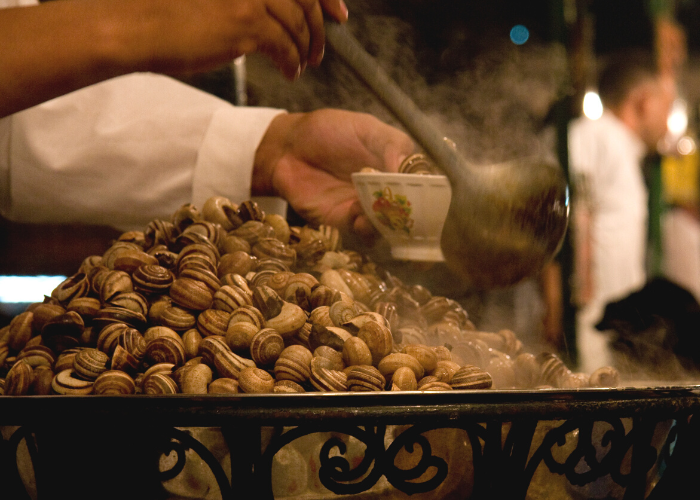
Snails with Lavender
Perhaps not one for the faint-hearted, this warming Moroccan dish is a particular favourite in wintertime, when it’s thought to help prevent colds and ease aches and pains. Snails are simmered in a flavoursome broth infused with up to fifteen different herbs and spices, including liquorice root and lavender. Known as babbouch, or ghlal, the snails are served in steaming bowlfuls, and diners extract the snails from their shells with toothpicks.
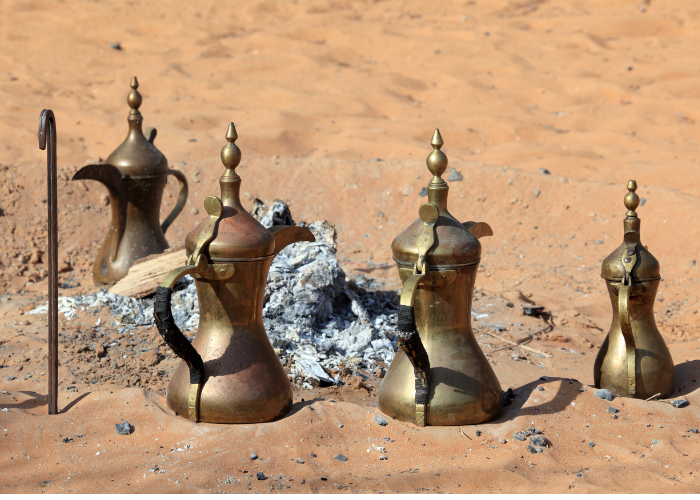
Qahwa
Coffee is an institution all across the Middle East and North Africa, where it isn’t just a delicious drink – it’s a daily necessity and a key element of hospitality and social events too. Coffee has been popular across the Middle East for hundreds of years, its popularity spreading across the region from Yemen, the original home of coffee, where the best coffee in the world is grown on hillside terraces carved into the mountains. From thick Turkish coffee to Arabic coffee fragrant with cardamom, qahwa or ‘ahwe is an absolute must try wherever you go in the Middle East. If you haven’t got any trips planned soon, never fear, our incredible Yemeni Arabica ships worldwide, and comes with a step-by-step recipe booklet so you can recreate the ultimate qahwa at home!
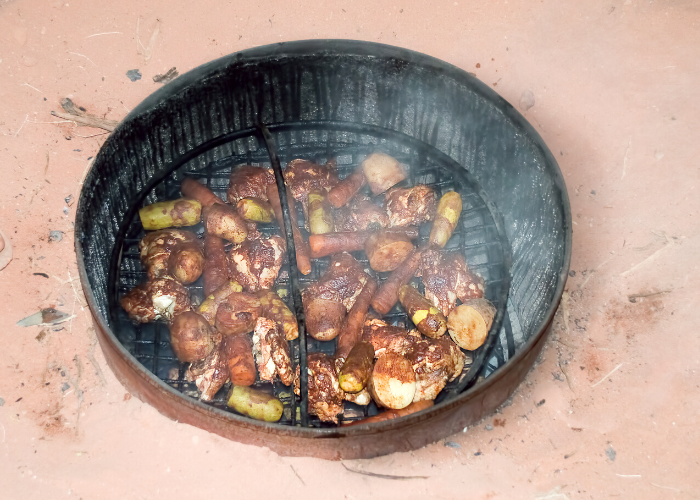
Zarb
This theatrical dish is a favourite in the deserts of the Arabian Gulf and the Levant. To make zarb, chicken or lamb and vegetables are rubbed with spices and herbs and loaded onto an ingenious multi-level rack, which is then lowered into a fire pit dug deep into the desert sands. The pit is covered over and the food is left to cook in the heat of the embers, conserving precious firewood and producing succulent meat and perfectly cooked vegetables at the same time. Once cooked, the zarb pit is unearthed and dinner is pulled out of the ground with a flourish!
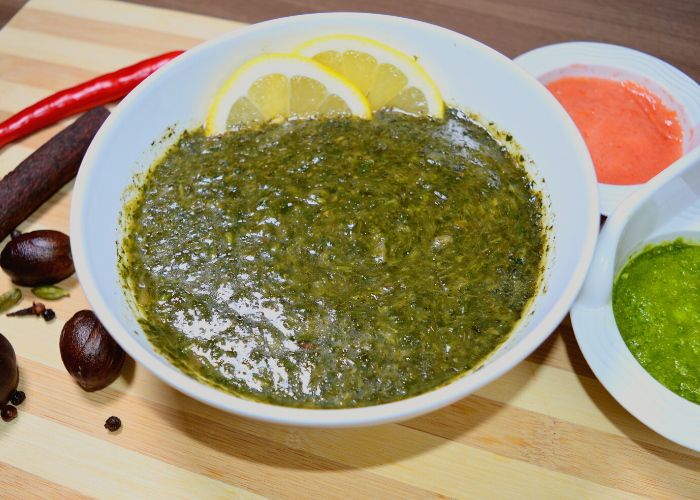
Molokhia
Unless you grew up eating it, you might not appreciate the magic of molokhia at first glance. Molokhia is a dark green, soupy, mucilaginous mixture made from the leaves of the molokhia plant, also known as jute mallow. The leaves are finely chopped and simmered with chicken broth, butter, garlic and flavoured with cardamom and mastic (a kind of tree resin known for its flavour in cooking and baking). Served with chicken (or lamb), rice and often garnished with onions softened in lemon juice, we promise you that molokhia’s looks belie its taste, and that this dish is the ultimate comfort food! Packed with more iron than spinach and more than 30 other vitamins and minerals, molokhia isn’t just delicious, it’s a nutritional powerhouse – even more reason to give it a try.
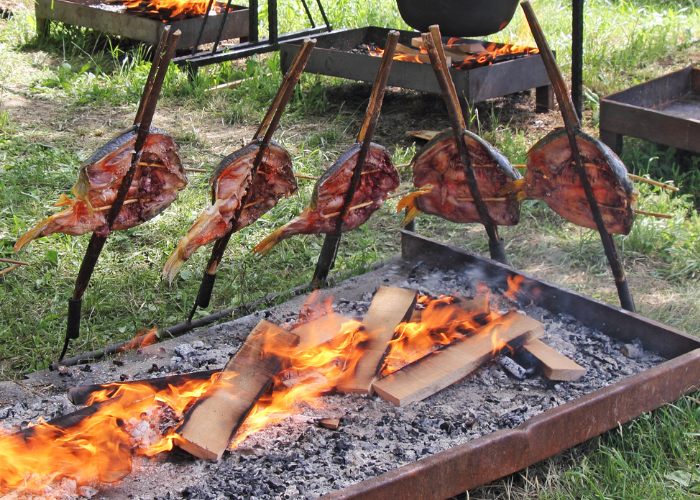
Masgouf
Considered by some to be the national dish of Iraq, masgouf is made by flavouring carp with tamarind and spices like turmeric, before grilling it whole over an open fire. A special favourite in Baghdad, masgouf is a must try if you’re ever lucky enough to visit Iraq or find an Iraqi restaurant in your hometown!
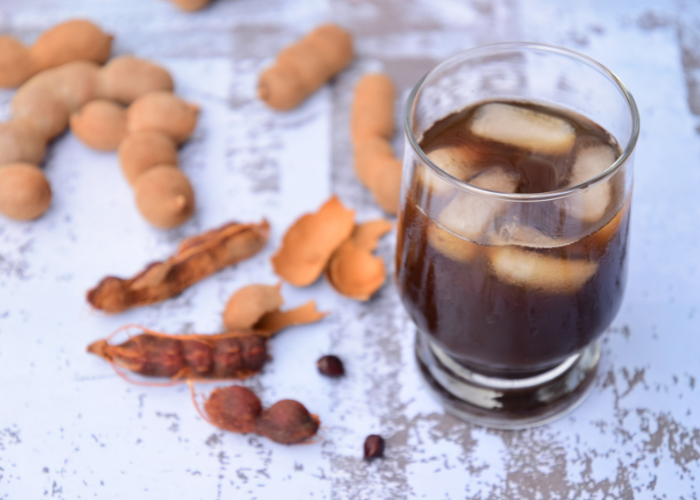
Tamarind Juice
A particular favourite during the holy month of Ramadan, tamarind juice is sweet, tangy and incredibly refreshing. Made from blocks of tamarind paste or fresh tamarind pods, some like to add rose or orange-blossom water to their tamarind juice for an extra layer of flavour. If you follow our Pink Jinn Arabic Instagram account or our Facebook page for Arabic learners, you might remember that tamr means dates in Arabic, and hind is the word for India – so Indian dates gives us tamr hindi, tamarind!
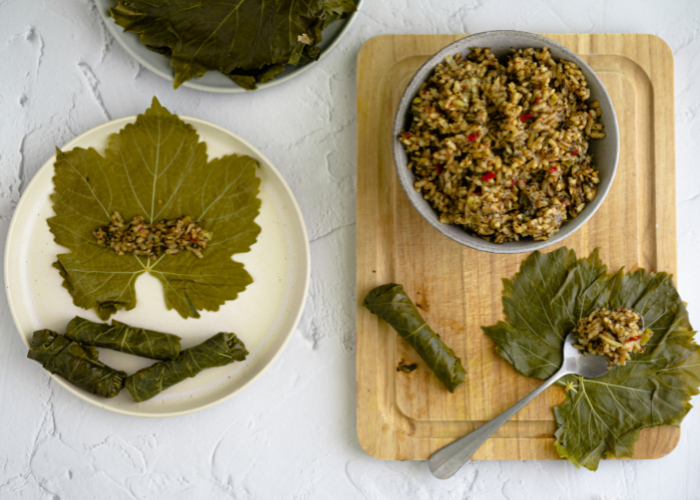
Stuffed Vine Leaves
Stuffed vine leaves are known by many different names across the Middle East – waraq ainab, wara’ dawali (grape or vine leaves) or yalanji in the Levant, yabruk / yebraa in Syria, mahshi (which just means stuffed) in Egypt and as dolma in Turkey and Iraq – but there’s one thing that doesn’t change – they’re always absolutely delicious!
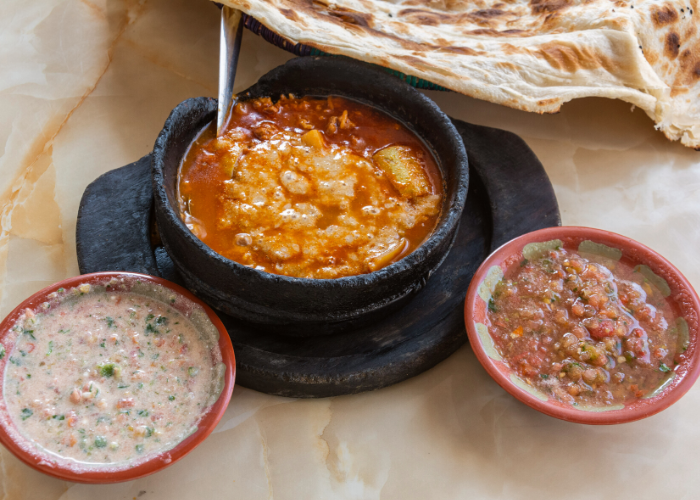
Fahsa
Yemen – the land of coffee, stunning plasterwork tower houses, dragon’s blood trees and the most delicious lamb dish you will ever taste in your life. Just one of our favourite dishes from this wonderful cuisine, fahsa is a deeply flavourful stew, cooked low and slow, laced with fenugreek and best enjoyed with enormous rounds of rashoosh flatbreads. Served sizzling hot from the oven, and traditionally eaten using pieces of bread to scoop out morsels of lamb, fahsa is so tasty you’ll be burning your fingers to eat it faster.
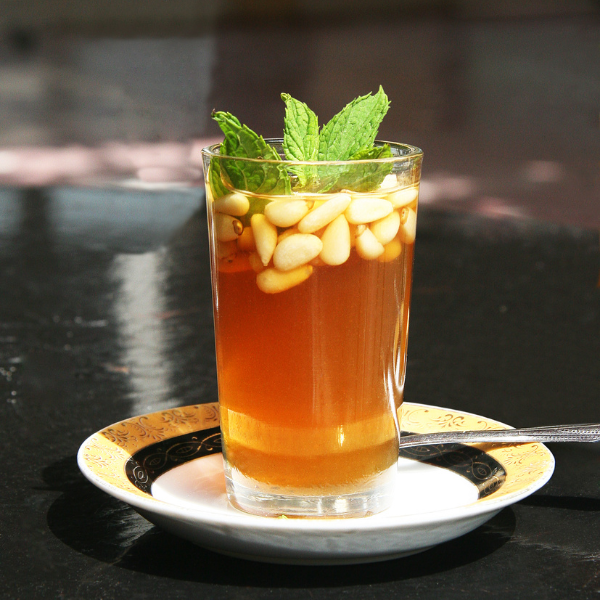
Mint Tea With Pine Nuts
While sweet tea infused with fresh mint leaves can be found across the Middle East and North Africa, in Tunisia there is a very special version of this delicious drink. Once the tea has been brewed, it is poured and repoured from the teapot into the tea glasses up to five times to aerate the tea, and then a handful of pine nuts are added to each steaming cupful! In some parts of the country, almonds are used instead of pine nuts – which would you prefer?
How many of these dishes and drinks have you tried on your travels across the Middle East and North Africa? Let us know how many you’ve ticked off so far and if you have any other favourites!
If you enjoyed this article, you may also like:
Ultimate Arabic Coffee Recipe – Brew Perfect Qahwa At Home
Frankincense: 5000 Years Of Scent And Spirituality
Reading Turkish Coffee Grounds 101: A Tradition of Fortune-Telling and Storytelling






